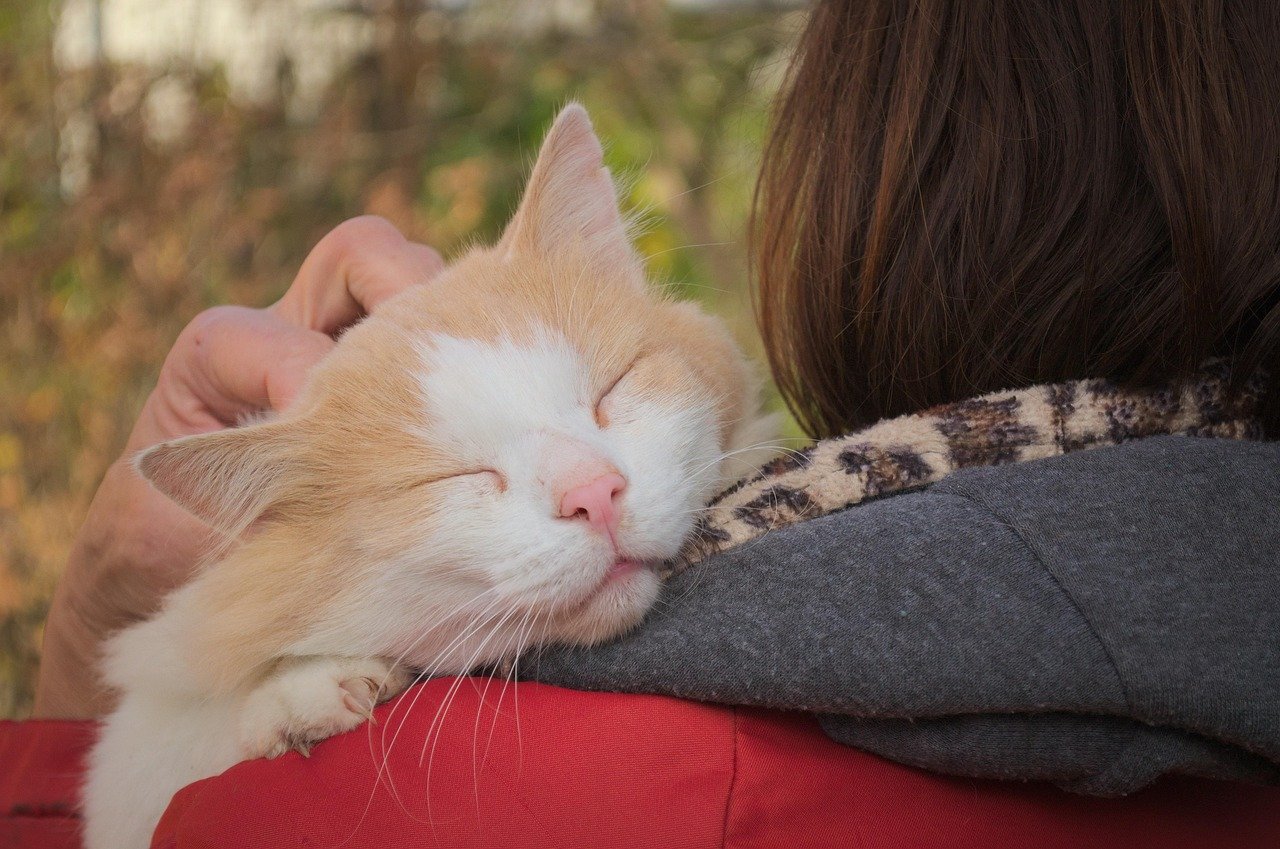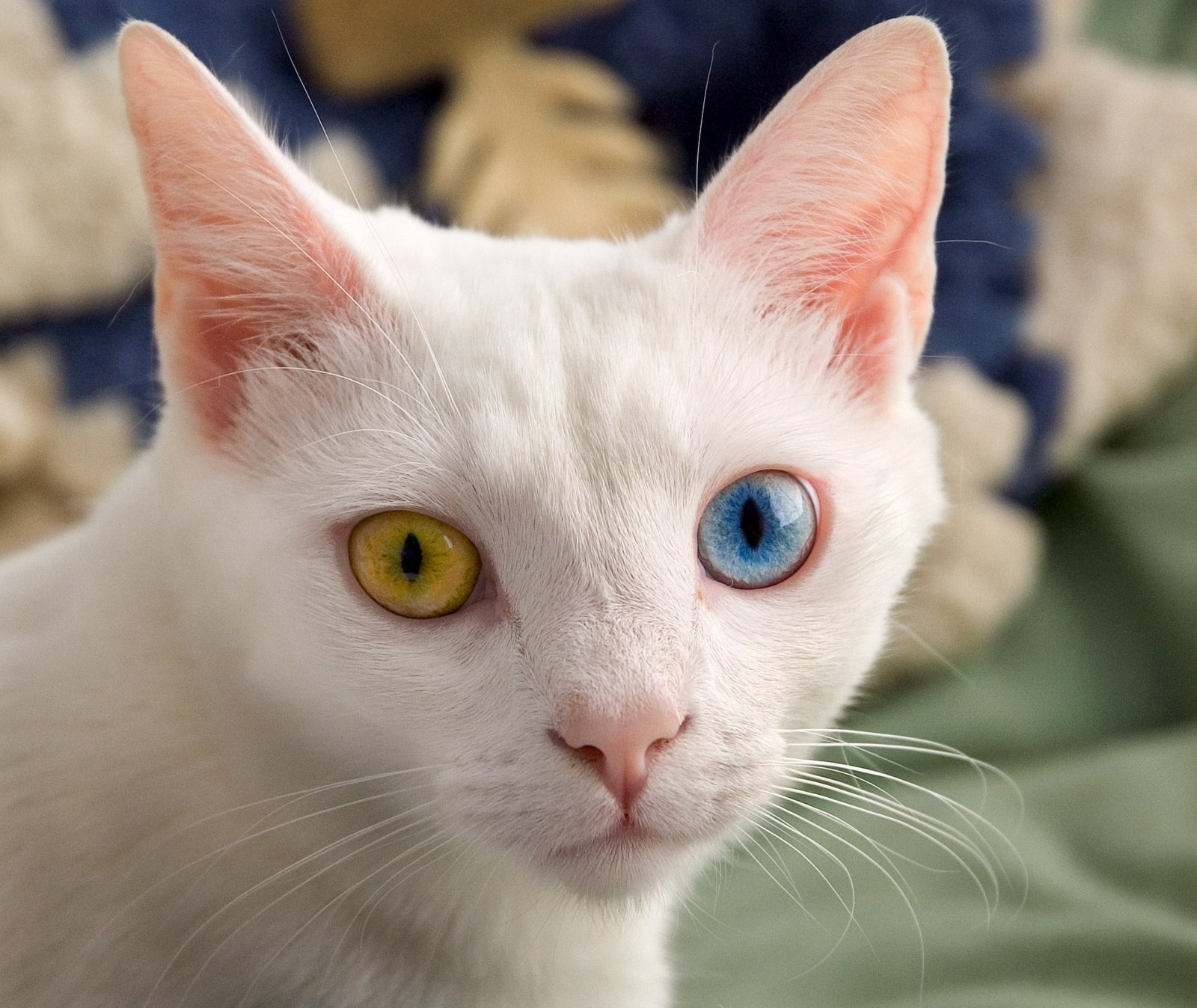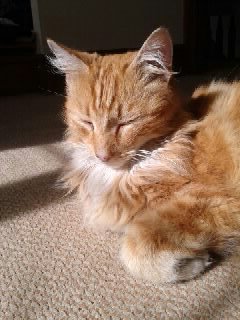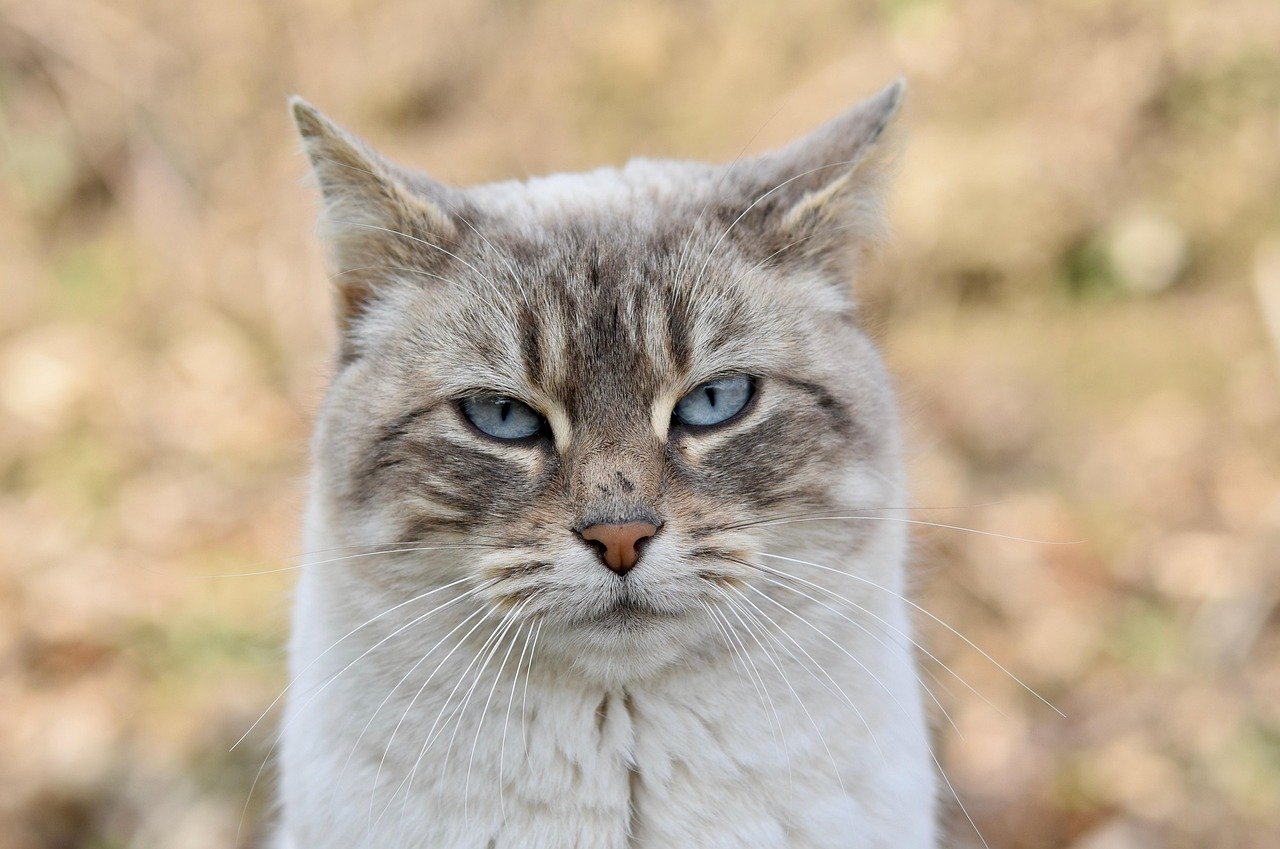Have you ever looked into your cat’s eyes and wondered what’s going on behind that mysterious, sometimes unreadable gaze? The emotional world of cats is far more intricate than we might think. While some people believe felines are aloof and independent, cat lovers know the truth: beneath that calm exterior lies a heart full of subtle emotions, shaped by years of experience, daily routines, and the connections they form with the world around them. The secret lives of our feline friends are a tapestry of emotional patterns, quietly woven over time. Let’s dive into these fascinating, often unnoticed emotional patterns that make our cats so captivating and loveable.
The Slow Bloom of Trust

Trust doesn’t happen overnight with cats. It’s a delicate process, built gradually through consistent care, gentle gestures, and patience. At first, a cat may keep its distance, watching you with cautious eyes. Over time, small signs—like a relaxed tail, slow blinks, or the willingness to nap nearby—show that your cat feels safe. Every soft head-butt and gentle purr is a milestone in this emotional journey. Once trust is earned, it becomes the foundation of your relationship. This trust, once established, is a comfort to both you and your cat, making your home a haven. Losing trust can be heartbreaking, but rebuilding it is possible with persistence and love.
Attachment Rituals

Cats form powerful attachments, often expressed through unique daily rituals. These might include greeting you at the door, rubbing against your legs, or meowing for breakfast at the same time every morning. These behaviors aren’t random; they’re emotional routines that reinforce your bond. If you pay close attention, you’ll notice your cat waiting for you by the window or following you from room to room. Even subtle touches, like brushing past your hand or sleeping on your pillow, are signs of deep attachment. These rituals can change over time, reflecting shifts in your cat’s emotional state or life circumstances. Their predictability brings comfort, signaling that all is right in their world.
Silent Communication

Cats are masters of silent communication. Unlike dogs, they rarely bark or whine to express themselves. Instead, they rely on body language and subtle cues. A flicking tail, flattened ears, or dilated pupils speak volumes about their feelings. Slow blinking—a “cat kiss”—is a sign of affection and trust. Even the way a cat positions its whiskers can reveal curiosity or unease. This silent dialogue is built over years of living together, as you both learn to read each other’s signals. The quieter your home is, the more attuned you become to these whispers of emotion. Understanding this nonverbal language creates a deeper, almost magical connection.
Anticipation and Routine

Routine is everything to a cat. Over time, they develop emotional patterns tied to daily schedules. They know when it’s mealtime, playtime, or bedtime, and they look forward to these moments with eager anticipation. A sudden change—like a late dinner or a missing toy—can throw them off balance. You might notice your cat pacing or vocalizing when their routine is disrupted. Anticipation isn’t just about food or play; it’s about feeling secure in a predictable world. This emotional rhythm is comforting for both you and your cat, creating harmony in your shared life.
Playful Curiosity

Curiosity isn’t just a trait; it’s an emotional drive for cats. From kittenhood, they explore every nook and cranny, pouncing on shadows and investigating new smells. As they age, this curiosity becomes more refined. They might watch you intently as you open a package or cautiously inspect a new piece of furniture. Playful curiosity is often a sign that your cat feels secure and engaged. It’s also a way for them to bond with you—by inviting you to join in their games or bringing you “gifts” they’ve found. This pattern of curiosity keeps their minds sharp and spirits high.
Protective Instincts

While cats may seem independent, they can be fiercely protective of their territory and loved ones. Over time, they develop subtle ways of guarding their space. You might notice your cat positioning itself between you and a stranger or watching over you from a high perch. Sometimes, they’ll bring you small prey or toys, a gesture rooted in their instinct to provide and care. Their protective behaviors can be so understated that you barely notice them, but they’re always there, woven into daily life. This instinct is a sign of deep emotional investment in their home and family.
Jealousy and Rivalry

Cats can feel jealousy, especially when a new pet or person enters their world. This emotion often reveals itself in subtle ways: sudden aloofness, excessive grooming, or marking territory with scent. You might notice your cat watching you closely when you pet another animal or vying for your attention with persistent meows. These patterns of rivalry are their way of expressing insecurity or the need for reassurance. Understanding this emotional pattern helps you balance affection and prevent long-term resentment. With patience, most cats learn to adapt and even accept new companions.
Hidden Loneliness

Cats are often seen as solitary creatures, but they can experience loneliness just as deeply as humans. When left alone for extended periods, they may develop quiet patterns of sadness—less playfulness, reduced appetite, or withdrawal. These signs are easy to miss, especially because cats hide vulnerability well. A lonely cat might seek comfort in a favorite blanket or spend more time gazing out the window. Reconnecting through play, conversation, or gentle touch can lift their spirits. Recognizing this emotional pattern reminds us that even the most independent cat needs companionship.
Contentment Through Familiarity

Familiarity breeds contentment in cats. They relish the comfort of a well-known environment, favorite spots to nap, and the scent of their people. Over time, cats establish emotional anchors—places and objects that make them feel safe. If you move furniture or bring in new scents, your cat might need time to adjust. Once comfortable, they show their contentment by purring, kneading, or stretching out in vulnerable positions. This sense of security is an emotional reward that makes your home their true sanctuary.
Gentle Grieving

Cats grieve the loss of people or animal companions in their own quiet way. This emotional pattern can be seen in changes to their daily routine—sleeping more, eating less, or searching for the missing friend. Grieving cats may become more clingy or, conversely, withdraw from interaction. Over time, most find a new equilibrium, but the process requires patience and extra care. Offering comfort and maintaining familiar routines helps them heal. Their subtle mourning is a testament to the depth of their emotional connections.
Adapting to Change

Change is challenging for cats, but with time, they develop patterns of adaptation. Whether it’s moving to a new home, the arrival of a baby, or rearranging furniture, cats initially react with caution or stress. Gradually, they explore and adjust, finding new favorite spots and re-establishing routines. Their ability to adapt is a sign of emotional resilience, even if the process is slow. By providing stability and reassurance, you help your cat navigate transitions with confidence.
Unspoken Empathy

Cats possess a remarkable sense of empathy. When you’re sad or unwell, your cat may stay close, offering silent comfort. They pick up on your mood through tone of voice, body language, and even scent. This emotional sensitivity strengthens over years of living together, becoming a quiet support system. A gentle nuzzle or the presence of your cat at your feet can be incredibly soothing during tough times. Their empathy is subtle, but deeply felt.
Expectations of Affection

As cats grow to trust you, they develop clear expectations for affection. These expectations become patterns: a head rub after dinner, a cuddle in the morning, or gentle petting during quiet evenings. If these rituals are missed, your cat may remind you with a paw tap or a pointed stare. Over time, these moments of affection become essential to their emotional well-being. Meeting these expectations is a simple yet powerful way to reinforce your bond.
Selective Socialization

Not all cats are social butterflies, but each develops a pattern of socialization that suits their personality. Some cats prefer one-on-one time with their favorite person, while others enjoy mingling with guests or other pets. These preferences evolve over time, shaped by positive or negative experiences. A cat that once hid from visitors may eventually greet them with curiosity. Respecting your cat’s social boundaries is key to nurturing their emotional health.
Subtle Signs of Joy

Cats express joy in quiet, sometimes unexpected ways. A playful leap, a contented chirp, or a dramatic flop on their back are all signs of happiness. You might notice your cat “zooming” around the house after a nap or rolling in the sunlight. These moments of feline delight are easy to miss if you’re not paying attention. Over time, recognizing these patterns brings more joy to your own life, as you learn to celebrate the little things with your cat.
Building Confidence

Confidence is an emotional pattern that develops slowly in cats, especially those from challenging backgrounds. You’ll notice progress in small steps: exploring new rooms, greeting new people, or playing more boldly. Supportive environments and positive reinforcement help your cat build courage. A confident cat holds its tail high and moves with purpose, a sign of inner security. Every act of bravery, no matter how small, is a victory that builds emotional strength.
The Comfort of Solitude

While cats can be affectionate, they also need time alone. Solitude is not loneliness for a cat; it’s a source of comfort and self-renewal. Over time, you’ll notice your cat seeking out quiet corners or high shelves where they can observe without interference. These moments of retreat are important for emotional balance. Respecting your cat’s need for alone time strengthens trust and reduces stress.
Territorial Contentment

Cats are deeply territorial, and their sense of contentment is tied to the security of their domain. They patrol their favorite spots, rub their cheeks on furniture, and mark safe zones with scent glands. These territorial behaviors are emotional patterns that bring reassurance. A cat that feels secure in its territory is more relaxed and playful. Changes to their environment may trigger anxiety, but with familiar scents and routines, they quickly regain their sense of control.
Predictable Reactions to Stress

Over time, cats develop predictable ways of handling stress. Some hide, others become vocal, and a few may over-groom or refuse to eat. These reactions are emotional coping mechanisms, shaped by experience. Recognizing these patterns helps you intervene early, offering comfort or removing stressors before anxiety escalates. With support, most cats learn to recover from stressful events more quickly.
Affectionate Memory

Cats remember acts of kindness and affection, building an emotional memory bank over the years. A gentle touch, a favorite treat, or a comforting voice all leave a lasting impression. These memories shape their future behavior, making your bond stronger with every positive interaction. If you’ve ever seen your cat perk up at the sound of your voice or snuggle into your lap after a long day, you’re witnessing the power of affectionate memory in action.
Endearing Quirks and Habits

Every cat develops its own unique quirks and habits—those little oddities that make them so endearing. Maybe your cat insists on “helping” you work, or always sits in the same sunny spot. These quirks are more than just funny behaviors; they’re emotional patterns that reflect your cat’s personality and history. Embracing these habits is part of what makes sharing your life with a cat so rewarding.
Hi, I’m Bola, a passionate writer and creative strategist with a knack for crafting compelling content that educates, inspires, and connects. Over the years, I’ve honed my skills across various writing fields, including content creation, copywriting, online course development, and video scriptwriting.
When I’m not at my desk, you’ll find me exploring new ideas, reading books, or brainstorming creative ways to solve challenges. I believe that words have the power to transform, and I’m here to help you leverage that power for success.
Thanks for stopping by, Keep coming to this website to checkout new articles form me. You’d always love it!






